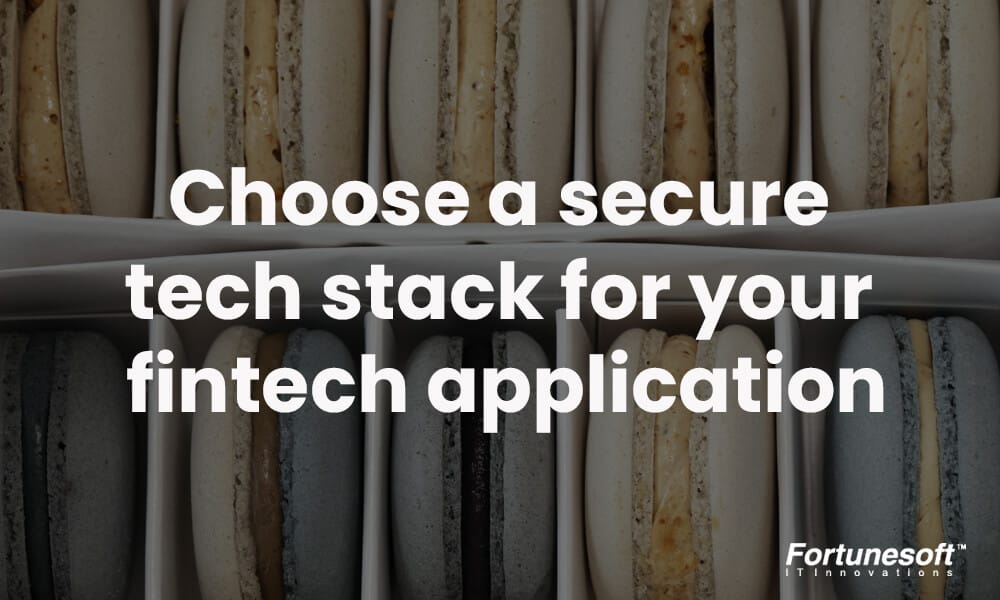 By Jeevan Babu December 8, 2020
12 min read
By Jeevan Babu December 8, 2020
12 min readMicroservice architecture- A necessity in fintech
Financial service companies consider microservices as a vital asset in their journey of digital transformation. With a wide range of benefits offered by microservices such as increased scalability, enhanced security, and reliability, financial organizations are leveraging these advantages to move faster, stay proactive, and constantly innovate to pace up in this fast-moving digital ecosystem.
Microservice adoption is on the rise due to its potential to keep services more competitive, relevant, in-demand, and highly responsive to the variations of the market. According to research, the Microservice architecture market is forecasted to reach $32.01 billion by 2023. It is further predicted that there will be a rise in the adoption of microservice architecture among the North American financial companies as it helps in cost-effective data storage and information, and increases efficiency, agility, and scalability.
Today, service-oriented architecture is more prevalent and eye-catchy due to its capability to offer flexible services and enhanced customer experience. Financial institutions are focusing on adopting modernized IT architecture for their fintech apps to deliver faster product launches, easier compliances, instant payments, and maximized agility.
Why tapping on the benefits of microservices is essential?
We are aware that microservice was basically devised to solve the inherent issues that occurred due to monolithic design. Microservice breaks the entire monolithic application into smaller, independent, deployable services around specific business capabilities.
Disruptive technologies like Blockchain, AI, Cryptocurrency and architecture like Microservice are responsible to change the face of the financial sector. There is a tremendous technology shift that drives change in the way a consumer spends, borrows, invests, and stores capital. Therefore, it is necessary to start adapting to the current and upcoming market trends to survive in this competitive curve.
Fintech companies and banks are tapping on the benefits of microservices as they realized the difficulty to modify their digital services with a legacy system. With cryptocurrencies and marketplaces adoption, there is a lot of pressure on fintech companies and banks to pace up to this digital game. Traditional monolithic systems are extremely difficult to modify and are costly and time-consuming.
Microservice has become a favorite to re-architect the existing applications and create a new one. To avoid any complications during the migration process for large enterprises and while creating fintech apps on microservices, it is a mandate to update your tech stack.
Measuring Success With Microservices
Undoubtedly, Microservice has become a necessity for businesses looking for growth and profit in the long-run.
One of the most popular examples of microservice success is Netflix. Netflix initially employed a monolithic model till 2008. This reliability on a monolithic model cost Netflix a major database corruption. This IT outrage forced the streaming giant to migrate its monolithic architecture to microservice for increased scalability, reliability, and availability.
Businesses such as Amazon, PayPal, Capital One, and Monzo are demonstrating their success with microservice. They have embraced microservice architecture to rapidly scale and deliver value to their customers.
Back in 2001, the Amazon website was a large monolithic application. It had multiple tiers. Each tier had multiple components within itself. Every tier was tightly coupled with each other and behaved as a single monolith. With market changes, the customer demand increases. Over the time, the project matures and there is a requirement to modify the code as per the growth. This gave rise to complexity and overhead into the process leading to slowing down of the development process.
Amazon had to face development delays, challenges in coding, and service interdependency leading to degraded performance and inability to scale the requirements of its rapid growing customer base.
This led to adoption of microservice and Amazon refactored their system from scratch and broke their monolith into small, independent, service-specific applications.
Financial institutions are trying to get the maximum from microservices to deliver best results. With microservice, you can add a new payment app or add some new features without disturbing other adjacent services. Any enhancement can be added without adversely affecting resiliency and downtime across an entire product suite.
Key benefits of adopting microservice for fintech
There are a plethora of advantages of adopting microservice for fintech if they get it rightly done. Let’s explore.
Agility: To explain how microservice provides agility, consider a payment wallet that asks for user identification to complete a transaction. This entire process is carried out without the worry of causing downtime or other unintended consequences such as prohibiting cross-border payments in the digital wallet.
In other words, microservice paves the way for an application to adapt to the market changes quickly and seamlessly. As a microservice is isolated, it owns an architectural way that simplifies modification to the individual microservice without causing any disruption to the existing services.
Scalability: Microservice offers fintech startups to combat scalability issues that they often face. When there is an opportunity to add features to enhance their existing fintech apps, they find it a complex and costly engagement. By leveraging microservice, a fintech application attains scalability with a reduced cost and low security risk. This further boosts fintech partnership capabilities as services are exchanged in or out in a more flexible IT environment making it more efficient.
Reusability: Microservice architecture supports reusability by building composable, modular services. As microservice architecture breaks down large applications into smaller, independent modules, the reusability becomes easier, compared to its large monolithic application counterparts.
Quicker time to market: Due to its modular nature, microservice facilitates faster development. Whether it is a whole new development of a microservice-based application or simply adding new features, microservice saves a lot of time and helps in increasing the developer’s productivity.
Simplified Debugging and Maintenance: When it comes to re-engineer an existing application, debugging is very time-consuming. Debugging becomes a treat for microservice-based fintech apps as they have multiple services combined together rather than a large single application. As you can maintain each service individually with microservice, maintenance is also hassle-less and requires less time.
Resilience: Microservice has a unique way of handling failures. Since microservice involves small, independent modules, a failure of one single microservice doesn’t affect the entire application. This failure of a microservice is handled by other modules. This is done by isolating the fault, i.e., only the functionality offered by that microservice will be unavailable. Best example is, if in a banking app, a microservice that is specific to transfer money fails, it will still provide the customer to check their account balance.
High-Quality: Microservice facilitates working in focused modules. This helps in overall quality improvement of the application. Each microservice has a dedicated team and a specific functionality to focus on. This helps the developers to create a top-notch, reliable piece of code. This further enables easy management of issues within the code base while offering reusability and scalability with third-party services.
Compatibility: Whether it is CI/CD, agile methodology or containers, microservice architecture is compatible with these effective processes and methodologies. The teams have the flexibility to choose the processes that suit best while developing a fintech app. As per the needs of the application, the developers use tools such as Docker and Kubernetes for containers or FlexDeploy for DevOps and integrate microservice in their development methods.
Trends to watch out in 2021 for Microservices
To get into the bandwagon of the technological shift in the digital paradigm, check out the top trends in microservices
Microservice Adoption for SaaS Companies
This year SaaS applications are expected to contribute a revenue of $105 billion this year as per Gartner’s statistics. Due to remote working, there is a tremendous surge in the demand of SaaS-based applications and tools. SaaS has the potential to drive efficiencies in cost, agility, scalability that it provides enterprises for strategic application workload on cloud.
Microservice has become a key asset for building cloud-based applications that will support scalability and agility in development practices. As microservice focuses on optimal customer experience, it has become a mandate and will continue to lead towards adoption at a faster pace for SaaS companies.
AI in Microservices
Some of the major challenges of microservices are solved using AI. Whether load prediction, decay detection, security, personalization, or resource planning, the emergence of AI in microservice has made management of microservices easier.
Blockchain Adoption in Microservices
Businesses want to build lightweight applications. They are striving hard to get such applications through digital collaboration of Blockchain and Microservice architecture. Blockchain is a key mechanism in the fintech ecosystem and enterprises want to leverage the immense benefits of this technology for trustless and agile data coordination.
IoT and Microservices
The main reason for the boom of IoT with microservices is, IoT users always crave for optimal user-experience. That can be in the form of connectivity, UX design, features and functionalities, or performance. To maintain and match the expectations of users, the platform, devices, and application requires frequent updates and changes. Therefore, a microservice architecture is the best suit for these kinds of applications.
Containers and Microservices
One of the best ways to develop and deploy microservice-based applications is using containers. Containers are a better choice for microservices due to its capability of reducing overhead and efficiency. Kubernetes is one of the popular choices as a container orchestration platform that helps to bring your application from development to deployment quickly. Containers have become one of the popular trends that is on rise for adoption.
Serverless Microservice
As the name suggests, in serverless microservice, small parts of an application run on the serverless architecture. The serverless microservice architecture improves the operations of the development team. It offers your business app with enhanced scalability, performance, testability and quicker development and deployment with a reduced cost and time.
Wrapping it up
Microservice architecture is all about creating smaller, independent services specific to a particular business functionality. Every individual service has a dedicated team that focuses on developing functions serving the specific business requirement. This drives high-quality code and improvised processes across businesses.
Microservice adoption in fintech is about more secure and cost-effective fintech solutions. Fintech development companies leverage the benefits of microservices such as resilience, agility, availability, scalability, and flexibility to create light-weighted fintech apps with hassle-free maintenance and debugging. Microservice helps in quicker adaption to market changes and has been always highly responsive to the changing curve of the financial ecosystem.
Today, the scope of microservice is considered with containers, IoT, Blockchain, and AI. If you are looking to build a cloud-based fintech app and interested in microservice and containers together, have a call with a leading fintech app development company. Search for organizations that houses highly experienced fintech app developers with hands-on experience in developing, building, delivering, and running microservices with containers in the cloud, container technologies like Docker and Kubernetes, and CI/CD pipelines for creating efficient and effective processes.
Author Bio


 Facebook
Facebook Whatsapp
Whatsapp LinkedIn
LinkedIn Pinterest
Pinterest














 Start Chat
Start Chat